The New Yorker magazine, a staple of American literary and cultural life defined by its distinctive covers, long-form journalism, witty cartoons and particular grammar, is celebrating 100 years on newsstands.
To mark the publication’s centenary milestone, four commemorative issues are being released, while its namesake city will host seven exhibitions ahead of a Netflix documentary on the title known for its artistic cover creations.
Despite its storied history, the New Yorker often puts a mirror up to current events. Three founding fathers were shown on a recent cover design being marched out of office, carrying their effects in cardboard boxes in a satirical commentary on US President Donald Trump’s assault on the status quo.
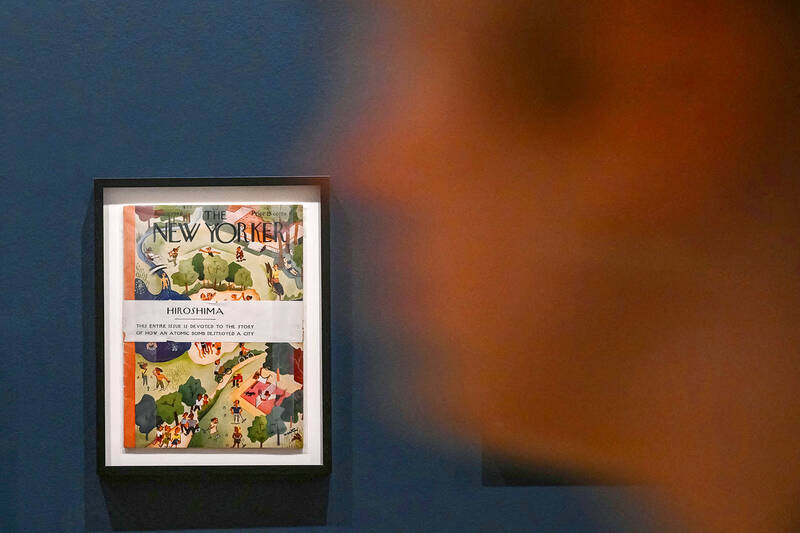
Photo: AFP
Francoise Mouly, the magazine’s artistic director, said the New Yorker was not immune from the crisis plaguing the media.
“But I’m stubborn and I see the future with a lot of confidence and hope,” she said.
Mouly has been one of the conductors of the New Yorker orchestra since 1993, selecting the cover that week after week lends the magazine its unique identity.
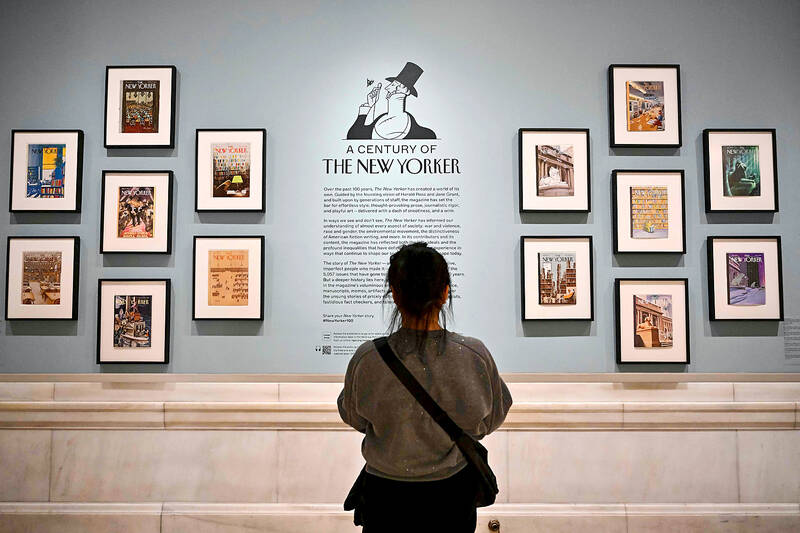
Photo: AFP
“There are some printed products that will never be replaced by digital — children’s books, comics and the New Yorker,” she said at a recent exhibition showcasing the magazine’s art, held at New York’s Alliance Francaise cultural center.
One example of cover art on display depicts a rush-hour subway scene in which all the passengers are animals, while another by Mouly’s husband Art Spiegelman shows a Black woman kissing a Hasidic man.
That 1993 design, which followed clashes between the two communities in a Brooklyn neighborhood, stirred controversy at the time and remains one of the title’s most discussed covers.
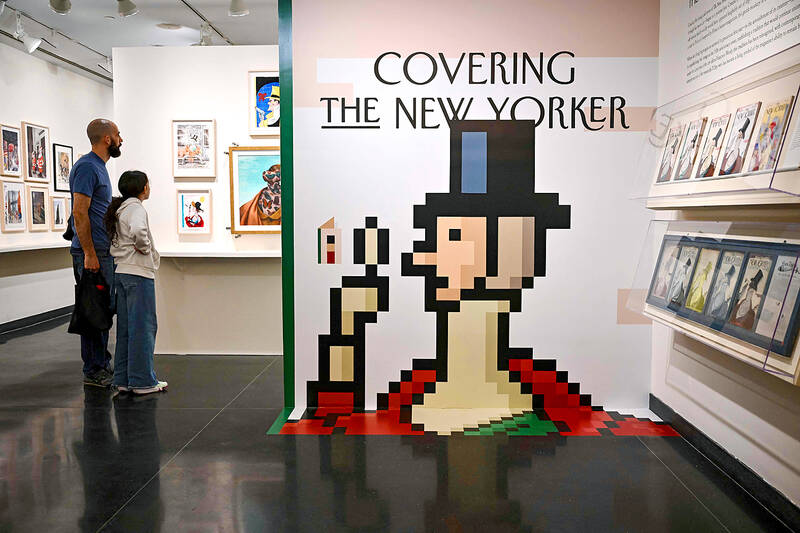
Photo: AFP
With more than 5,000 editions over the past century, the magazine has published literary greats like Truman Capote’s 1965 In Cold Blood, while also giving James Baldwin space to write about race relations.
‘INCREDIBLY SUCCESSFUL’
Ernest Hemingway, Susan Sontag and JD Salinger are among the authors to have graced the pages of the magazine which combines current affairs, analysis, fiction, reviews, criticism, poetry and of course its legendary cartoons.
Published weekly, the magazine has reported global scoops like the fullest account of the US atomic bomb dropped on Hiroshima, with the entirety of the Aug. 31, 1946 edition given over to John Hersey’s article.
In 1961 Hannah Arendt covered the trial of Nazi war criminal Adolf Eichmann in the reporting of which she coined the phrase “the banality of evil.”
In recent years the magazine won a Pulitzer Prize for Ronan Farrow’s reporting of predatory film mogul Harvey Weinstein, fuelling the “MeToo” movement.
“These were all remarkable, long-form stories that really changed the course of American history, not just American journalism,” said Julie Golia, curator of an exhibition on the magazine at The New York Public Library.
Founded on February 21, 1925, the New Yorker did not always have such lofty ambitions.
At the height of the Jazz Age, amid post-war and pre-depression euphoria, husband and wife founders Harold Ross and Jane Grant set out to create “a magazine of wit and cosmopolitanism, an urbane magazine, but not one that took itself too seriously.”
One hundred years on, it boasts 1.3 million subscribers, most of whom subscribe in both print and digital formats. It is a jewel in the crown of media group Conde Nast, which also publishes Vogue, Vanity Fair and GQ, having bought the New Yorker in 1985.
Despite its highbrow image, the magazine has adapted to the digital age emphasizing subscriptions over advertising, editor-in-chief since 1998 David Remnick said in a recent radio interview.
“The New Yorker is much more than those pages that people get in the mail,” said Golia.
“It’s a Web site, it’s podcasts, it’s a festival and it’s a brand (and) as a brand, it’s incredibly successful.”

Last week the story of the giant illegal crater dug in Kaohsiung’s Meinong District (美濃) emerged into the public consciousness. The site was used for sand and gravel extraction, and then filled with construction waste. Locals referred to it sardonically as the “Meinong Grand Canyon,” according to media reports, because it was 2 hectares in length and 10 meters deep. The land involved included both state-owned and local farm land. Local media said that the site had generated NT$300 million in profits, against fines of a few million and the loss of some excavators. OFFICIAL CORRUPTION? The site had been seized

Next week, candidates will officially register to run for chair of the Chinese Nationalist Party (KMT). By the end of Friday, we will know who has registered for the Oct. 18 election. The number of declared candidates has been fluctuating daily. Some candidates registering may be disqualified, so the final list may be in flux for weeks. The list of likely candidates ranges from deep blue to deeper blue to deepest blue, bordering on red (pro-Chinese Communist Party, CCP). Unless current Chairman Eric Chu (朱立倫) can be convinced to run for re-election, the party looks likely to shift towards more hardline
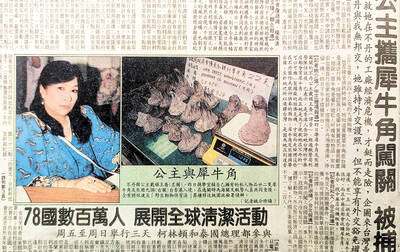
Sept. 15 to Sept. 21 A Bhutanese princess caught at Taoyuan Airport with 22 rhino horns — worth about NT$31 million today — might have been just another curious front-page story. But the Sept. 17, 1993 incident came at a sensitive moment. Taiwan, dubbed “Die-wan” by the British conservationist group Environmental Investigation Agency (EIA), was under international fire for being a major hub for rhino horn. Just 10 days earlier, US secretary of the interior Bruce Babbitt had recommended sanctions against Taiwan for its “failure to end its participation in rhinoceros horn trade.” Even though Taiwan had restricted imports since 1985 and enacted
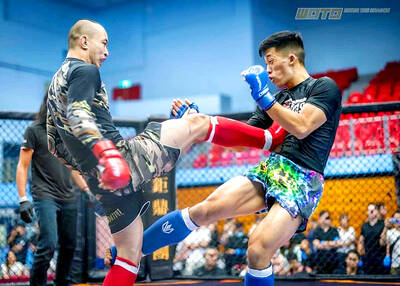
Enter the Dragon 13 will bring Taiwan’s first taste of Dirty Boxing Sunday at Taipei Gymnasium, one highlight of a mixed-rules card blending new formats with traditional MMA. The undercard starts at 10:30am, with the main card beginning at 4pm. Tickets are NT$1,200. Dirty Boxing is a US-born ruleset popularized by fighters Mike Perry and Jon Jones as an alternative to boxing. The format has gained traction overseas, with its inaugural championship streamed free to millions on YouTube, Facebook and Instagram. Taiwan’s version allows punches and elbows with clinch striking, but bans kicks, knees and takedowns. The rules are stricter than the